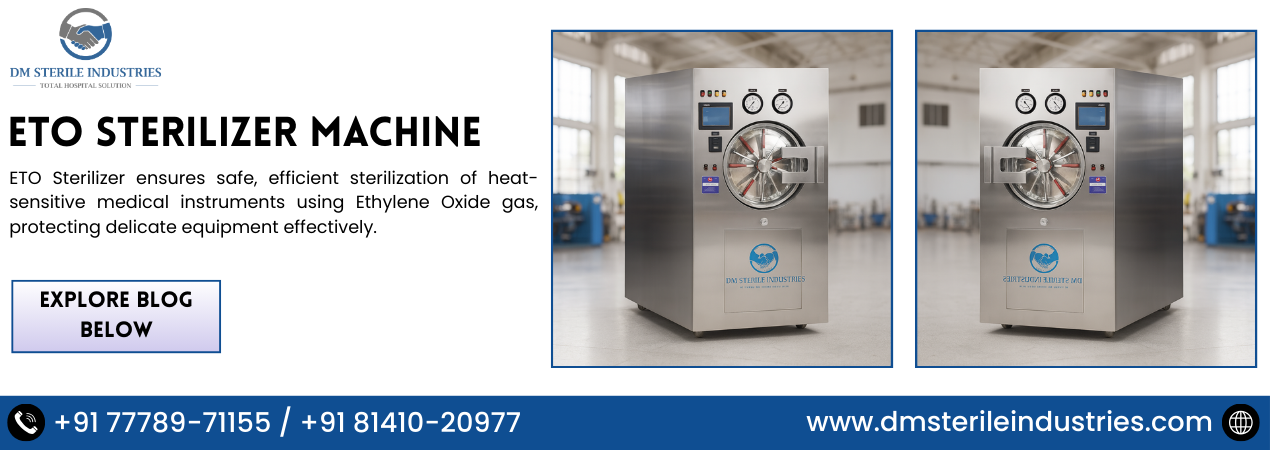Bio Waste Sterilizer
Introduction to Bio Waste Sterilizer
A Bio Waste Sterilizer is a critical piece of equipment designed for the safe and efficient treatment of infectious biomedical waste. Used in hospitals, clinics, diagnostic centers, and research facilities, it decontaminates waste materials like used syringes, sharps, dressings, and lab cultures by using high-pressure saturated steam. This process ensures that all pathogenic microorganisms are destroyed, rendering the waste non-infectious and safe for disposal. By complying with stringent biomedical waste management rules, a bio waste sterilizer provides a hygienic and environmentally responsible alternative to traditional methods like incineration, thereby protecting both healthcare workers and the community.
Working Principle and Decontamination Process
Bio waste sterilizers operate on the same principle as steam autoclaves, utilizing moist heat under high pressure to achieve sterilization. The process begins by loading the segregated biomedical waste into the chamber. The door is sealed, and a vacuum is created to remove air from the chamber. Steam is then injected, raising the internal temperature to a high level (typically 121°C or 134°C) and pressure for a specific duration. This high-temperature, high-pressure steam effectively penetrates and kills all microorganisms. After the sterilization cycle, the steam is released, and the now-decontaminated waste is cooled and made ready for final disposal as general waste, significantly reducing the risk of infection.
Types of Biomedical Waste Treatment Systems
- Steam Autoclave (Bio Waste Sterilizer): A proven and widely used method for sterilizing infectious waste using high-pressure steam.
- Microwave-based Sterilizers: Use microwave energy to heat waste and destroy pathogens, often combined with a shredding system.
- Chemical Sterilization Systems: Utilize strong chemicals like chlorine dioxide or hydrogen peroxide to disinfect waste, although disposal of chemical residue must be managed carefully.
- Incinerators: A traditional method that burns waste at high temperatures. However, this method can release harmful pollutants into the environment and is being replaced by cleaner technologies.
- Plasma Sterilizers: A low-temperature technology that uses hydrogen peroxide plasma, primarily for sterilizing delicate medical instruments, not typically for bulk waste.
Key Features and Specifications of a Bio Waste Sterilizer
- High-Pressure, High-Temperature Chamber: A robust stainless steel chamber built to withstand the conditions required for effective sterilization.
- Automated & Programmable Cycles: Allows for different sterilization protocols to be set for various types of waste, ensuring consistent results.
- Safety Interlock Mechanism: Prevents the chamber door from being opened until the pressure and temperature have returned to safe levels.
- Integrated Shredding Unit: Some advanced models include an internal shredder that reduces the volume of the waste before sterilization, making disposal more compact and efficient.
Applications of Bio Waste Sterilizer
- Hospitals and Medical Clinics: Used for treating a wide range of infectious waste, including sharps, syringes, IV tubes, and used surgical dressings.
- Diagnostic and Pathology Labs: Essential for decontaminating used culture plates, swabs, blood collection tubes, and other biohazardous lab materials.
- Blood Banks: Used to safely sterilize blood bags, collection kits, and related contaminated items before their final disposal.
- Veterinary Clinics & Animal Research Facilities: Employed to treat and dispose of infectious waste generated from animal care and research activities.
Benefits of Using a Bio Waste Sterilizer
- Complete Decontamination: The high-pressure steam method effectively destroys all microorganisms, ensuring the waste is non-infectious and poses no risk to public health.
- Environmental Friendliness: It avoids the air pollution and toxic byproducts associated with incineration, making it a much greener choice for waste management.
- Compliance with Regulations:Using a certified sterilizer helps facilities comply with stringent government regulations for biomedical waste management and disposal.
- Waste Volume Reduction: By sterilizing and often compacting waste, these machines significantly reduce the final volume of waste, lowering disposal costs.
Manufacturers & Suppliers in India
India has a growing number of manufacturers and suppliers of bio waste sterilizers who are dedicated to providing safe and compliant solutions. Reputable firms like DM Sterile Industries, Krishna Engineering, and Sterility Equipment India offer a range of products that are robust, technologically advanced, and designed to meet the specific needs of healthcare facilities and laboratories. These companies play a crucial role in improving bio-medical waste management infrastructure across the country.
Maintenance and Safety Tips
- Ensure proper segregation of waste before sterilization. Only infectious waste should be put into the sterilizer, not general or recyclable waste.
- Always wear appropriate personal protective equipment (PPE), including gloves and face shields, when handling biomedical waste.
- Follow the manufacturer’s guidelines for loading the chamber and sealing waste bags to ensure proper steam penetration during the cycle.
- Regularly check and clean the chamber, drain filters, and seals to maintain efficiency and prevent blockages.
- Conduct periodic validation tests using biological indicators to confirm that the sterilization cycle is effective.
FAQs – Bio Waste Sterilizer
Contact Details
Talk to our specialists today for tailored solutions and fast assistance.

